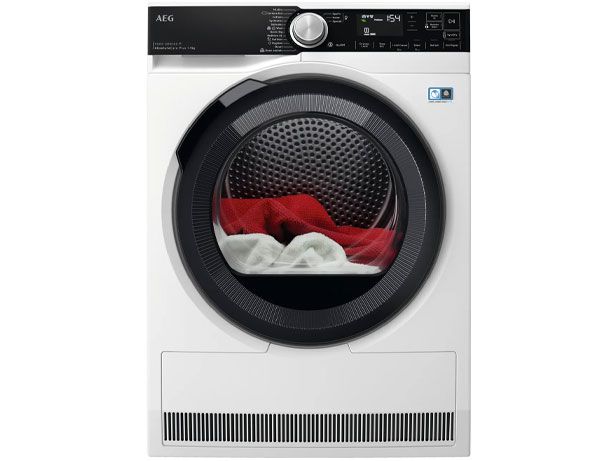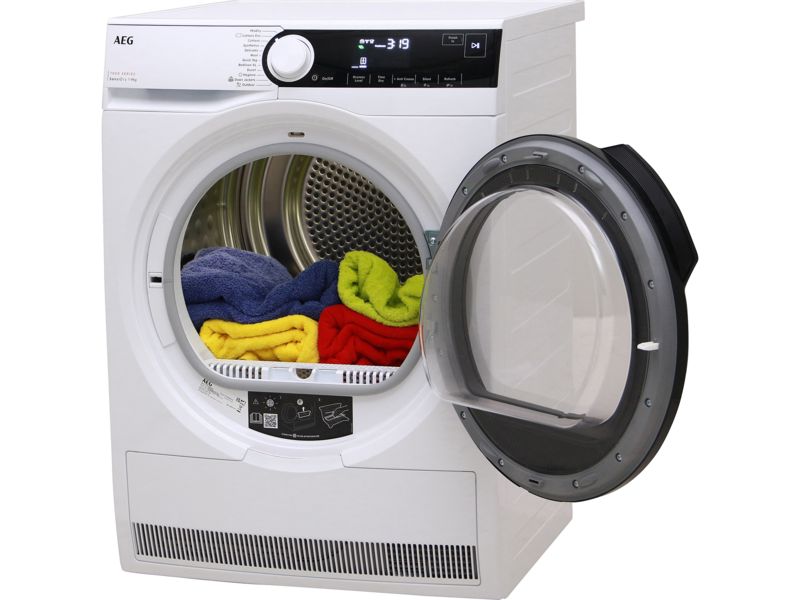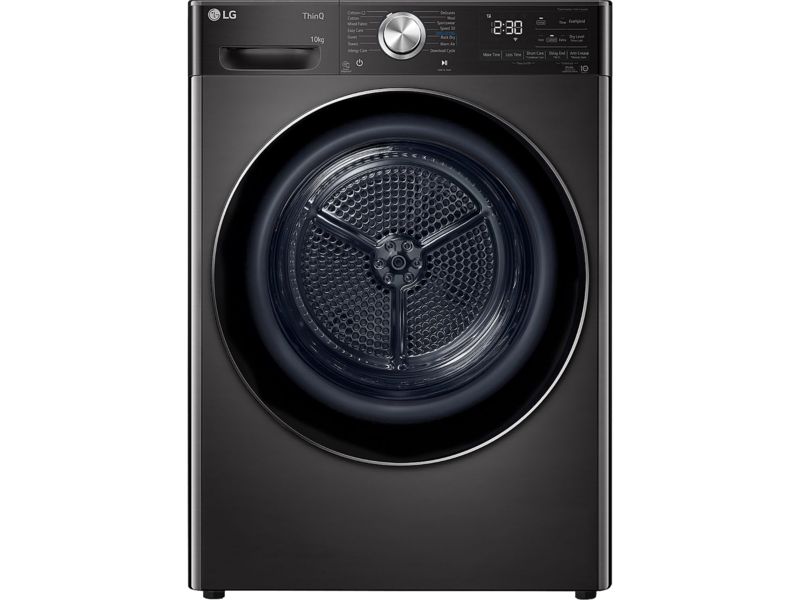How we test tumble dryers

In this article
- Video: How we test tumble dryers
- How long will it take to dry my clothes?
- How much will it cost to run?
- What is a Which? Eco Buy tumble dryer?
- Will it actually dry my clothes?
- Will my clothes be evenly dried and not creased?
- How noisy will it be?
- Will the condenser trap steam inside as it should?
You can't tell in the shop which tumble dryers offer quick, quiet and energy-efficient drying, so this is where Which? comes in. We tumble dry more than 1,200kg of clothes over a year to find the models that excel in all these key areas.
Our reviews answer crucial questions about tumble dryers and our rigorous tests find the best tumble dryers that excel in all these key areas and the ones that will let you down.
Find out which are the best and worst models by visiting our tumble dryer reviews.
Video: How we test tumble dryers
Watch our video below to see why a Best Buy tumble dryer will make a real difference.
How long will it take to dry my clothes?
The best tumble dryers need just 13 minutes per kilo of laundry to get your clothes dry and the worst will take more than 40 minutes per kilo. That means the fastest dryers on the market will dry 6kg of laundry in around one hour 30 minutes, whereas the slowest will take four hours.
We test two drying programs, giving a star rating to each to show how quickly they dry your clothes. We fill the drum to the tumble dryer's maximum capacity for synthetics and 70% for cottons, measuring how long it takes for the clothes to be dry enough to put away in a cupboard.
Cottons cupboard dry (70% load) The cottons that come out of the drum should be dry enough to put straight into the cupboard. We load the dryer with a mixture of the kinds of clothes you'd dry at home, such as jeans and towels.
Synthetics/easy-care cupboard dry (program capacity) The maximum capacity for drying synthetic clothing (man-made fibres such as polyester) is typically about half the amount of cottons you can dry. Most 7kg-capacity dryers, for example, will let you dry either 3kg or 3.5kg of synthetic clothing in one go. The load is made up of polyester, polycotton and some cotton items.
Go to our condenser tumble dryers guide to see our Best Buys and read all of our expert buying advice
How much will it cost to run?
We test how much energy each tumble dryer uses so we can guide you to the ones that are cheapest to run. The star rating we award for energy use looks at how much energy is expelled by each of the two programs listed above.
The most efficient heat pump dryer will cost around £39 a year to run, and the least efficient condenser will cost you £200.
We estimate how much a dryer will cost you to run each year based on the energy use recorded in our tests. Heat-pump dryers are the most efficient and those we've tested will cost an average £51 to run a year. The least efficient types are vented and condenser tumble dryers - these will cost an average £139 and £127 a year respectively.
The yearly running cost is based on drying three cotton loads a week for a year.
You can also work out how much it would cost to run a particular model of tumble dryer we've tested over its total lifetime by using our running cost tool.
What is a Which? Eco Buy tumble dryer?

When you next need to buy a dryer, the most sustainable option will be an Eco Buy, which will have a lower all-round environmental impact than other tumble dryers.
To be an Eco Buy, a tumble dryer will need to be among the most energy-efficient you can buy, it must do a good job of drying clothes and it needs to be long-lasting.
To become an Eco Buy, a tumble dryer must have:
- A total test score of at least 68%
- Five stars for energy efficiency
- Four stars for clothes drying
- It must get a good longevity rating in our annual appliance survey.
Only around one in four tumble dryers are sustainable enough to be Eco Buys and all are energy-efficient heat pump machines. To learn more about which dryers are labelled Eco Buys, go straight to our tumble dryer reviews.
Will it actually dry my clothes?
You'd think that all tumble dryers would excel at drying, but that's not the case. Our tests have shown that lots of dryers fail to dry a load properly, having wasted time and electricity.
This is why we test dryness of clothes and award a star rating for it in our tumble dryer reviews.
Determining when clothes are ‘dry’ involves weighing them before and after programs to see how much water they contain and also measuring their humidity. We do this three times for each of our two test loads.
Automatic dryers that use sensors to determine when your clothes are dry are especially susceptible to falling foul of this rating. A bad sensor may stop the drum when the clothes are still damp and need more drying, or alternatively might cause the clothes to be over-dried.
Over-drying means the program runs longer than it should, and adding more to your energy bills and increasing the risk of clothes being damaged.
Will my clothes be evenly dried and not creased?
Clothes taken out of the drum at the end of a cycle should be evenly dry or damp regardless of how well dried the clothes are overall – no sopping wet shirts and crispy socks should share the same drum.
We weigh individual items of clothing after the cottons program to determine how evenly the load has dried and award a star rating for evenness of drying.
When it comes to creases, our lab technicians study shirts after the synthetic program, grading the creases on the back of the shirt and the button line from one to five.
For all machines tested, if a machines gets four stars from us for creasing, it leaves about the same amount of creases as if you'd just taken a garment out of the drum and left it to dry naturally.
How noisy will it be?
We rate the noise of the dryer at the noisiest part of the program. We consider how loud the sound of the motor is and also the noise made by tumbling laundry in the drum.
If a machine gets three stars, you should be able to hold a conversation near the dryer but with raised voices.
Will the condenser trap steam inside as it should?
Condenser and heat pump tumble dryers should trap and condense all the moisture taken from your laundry in a water reservoir or tank. Poor condensers will let moisture leak into your home, increasing the risk of damp and mould developing, as well as respiratory diseases.
We compare the amount of water in the water tank or reservoir after the program has finished to the amount in the clothes before drying. Any discrepancies will tell us how much water has leaked out into the air as steam.
The best machines trap and condense up to 95% of the moisture from your clothes. The worst we've seen will only hold on to 45%, leaving most of the moisture to leak out into your home.
How easy will it be to use?
An easy-to-use tumble dryer will make your laundry days smoother and safer. Our usability tests include how easy the instructions are to follow, how clear the program markings are, how easy it is to fill and empty the machine, and how easy the lint filter, water reservoir and heat exchanger are to clean.
We carry out dozens of checks to get to grips with convenience. Here are some examples:
Loading and unloading We look for dryers with a large door that requires little strength to open and close, using either a handle, push catch or press button, and which doesn’t swing shut during loading.
Lint filters and water reservoirs These should be easy to reach from a standing and sitting position, and require little force and simple actions to remove, clean and replace.
Control panel We look for buttons and dials that are clearly marked with self-explanatory captions nearby, are well spaced and have different shapes for different groups of functions. They should protrude from the instruction panel and be easy to grip, and require little force or one-handed and simple actions to activate.
Should I buy it?
All the ratings and measurements for the tests above go into creating test scores that tell you overall whether a machine is worth buying.
Here is how the scores are broken down for condenser and heat-pump tumble dryers:
- 50% drying evenness and exactness
- 20% energy consumption
- 10% ease of use
- 10% condensation efficiency
- 5% programme time
- 5% creasing.
Vented dryers do not condense water, so there's no test for condensation efficiency. This is how we break down the score for vented dryers:
- 55% drying evenness and exactness
- 22% energy consumption
- 11% ease of use
- 6% program time
- 6% creasing.


